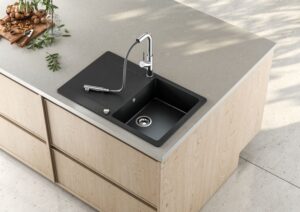Radiant floor heating has gained popularity in recent years as an efficient solution for heating homes and commercial spaces. This system is based on the principle of distributing heat evenly from the floor, providing a pleasant temperature in the rooms.
The concept of radiant floor heating is not new; in fact, it has its roots in ancient Rome, where the wealthy built systems under their floors called “hypocausts.” Today, this heating method has been modernized and optimized to maximize its energy efficiency and comfort.
There are two main types of radiant floor heating systems: electric and hydronic. The electric system uses electric cables or heating mats installed directly under the floor. These cables are connected to the home’s electrical network and are controlled by thermostats. This type of system is suitable for small areas or renovations, where a quick and simple installation is essential.
On the other hand, the hydronic system consists of a series of pipes through which hot water circulates, which can be powered by boilers, heat pumps, or solar panels. This type of system is more suitable for new construction projects or large-scale renovations, given the complexity and initial cost of installation. However, in the long term, it is usually more cost-effective in terms of energy consumption.
The first notable benefit of radiant floor heating is the even distribution of heat. Unlike traditional radiators that heat the air in one location, radiant floor heating heats the entire floor surface, resulting in a uniform temperature throughout the room. This not only increases comfort but also reduces cold spots and uncomfortable drafts.
In addition to heat distribution, energy efficiency is another strong point of radiant floor heating. Due to its ability to operate at lower temperatures compared to conventional radiators, it can significantly reduce energy consumption. This translates into lower heating bills and a reduced carbon footprint.
Another positive aspect to consider is the improvement in indoor air quality. Radiant floor heating systems minimize the circulation of dust and allergens that are often propelled by convection heating systems. This creates a healthier environment, especially beneficial for people with respiratory problems or allergies.
Furthermore, radiant floor heating frees up wall space, providing more freedom in interior design. The absence of radiators allows for greater flexibility in the arrangement of furniture and other decorative elements.
Despite its many advantages, it is important to mention that the installation of radiant floor heating can be expensive and requires careful planning. Initial costs may be higher than those of traditional heating systems, and installation in existing buildings may involve complex and disruptive work.
In summary, radiant floor heating offers several benefits that make it an attractive option for heating spaces. From uniform heat distribution to energy efficiency, to improved indoor air quality, there are many reasons why more and more people are opting for this modern and efficient system. However, its adoption should be carefully considered due to the initial costs and installation requirements.
Referrer: MiMub in Spanish











